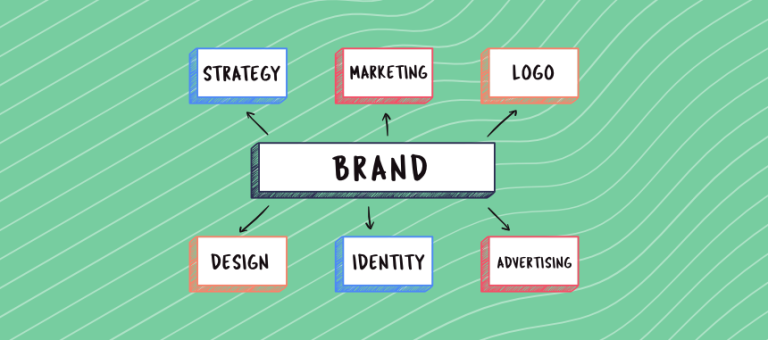Organizations and teams are constantly seeking ways to improve their processes, boost efficiency, and enhance overall performance. One powerful technique that can help achieve these goals is the Start Stop Continue framework.
This enables teams to evaluate current practices, identify areas for improvement, and make decisions on what to start, stop, and continue.
Below, we’ll delve into the Start Stop Continue framework, explore examples, and discuss how to conduct a Start Stop Continue exercise.
What is start stop continue?
Start Stop Continue is a simple yet effective framework used to assess and optimize employee performance. It involves reflecting on the team’s core activities and separating them into three key categories:
Start
New actions or practices that the team should begin implementing to improve their performance or achieve specific objectives. These can range from adopting new technologies, introducing innovative strategies, or exploring fresh ideas.
Stop
The stop category focuses on identifying activities or practices that have a negative impact. By recognizing and removing these elements, teams can reduce waste, streamline processes, and create a more productive work environment.
Continue
Emphasize the importance of acknowledging and reinforcing activities or practices that yield positive results. By continuing effective behaviors, teams can build on their strengths, maintain momentum, and foster a culture of continuous improvement.
Benefits of start stop continue
The Start Stop Continue framework offers several benefits for teams and organizations:
- Action-Oriented Approach: It emphasizes the importance of taking concrete steps to improve and achieve desired outcomes.
- Encourage change: Team members reflect on their own behaviors and practices. This reflection can lead to changes that positively impact team dynamics, collaboration, and overall performance.
- Reduce Waste and Improve Efficiency: The stop category prompts teams to identify activities that add little value or waste resources. By reducing waste and streamlining processes, teams can become more efficient and allocate resources more effectively.
- Positively Impact Team Performance: By identifying and continuing practices that yield positive results, teams can reinforce behaviors that contribute to success. This recognition and reinforcement boost team morale, engagement, and overall performance.
Examples of start stop continue
Let’s get into some practical examples of the start stop continue framework below.
Start examples
In the “start” category of this framework, teams identify actions or practices that should implement to improve performance. Here are a couple of examples:
Example 1: Implementing a new project management software
Many project managers often find themselves grappling with inefficient processes and a lack of visibility into project progress.
By starting to implement a robust project management software, teams can streamline communication, centralize project data, and improve collaboration.
This new tool provides real-time updates on project milestones and resource allocation, ultimately enhancing project efficiency and overall team performance.
Example 2: Introducing a flexible work schedule for team members
In today’s work landscape, achieving a healthy work-life balance is crucial. By starting to introduce a flexible work schedule, teams can empower their members to have more control over their time.
This could include options such as flextime, compressed workweeks, or remote work arrangements. Such flexibility can boost employee satisfaction, reduce burnout, and foster a more productive and engaged team.
Stop examples
The “stop” category focuses on identifying activities or practices that have a negative impact. Let’s get into two real-world examples:
Example 1: Stopping redundant meetings
Meetings are often notorious for being time-consuming and unproductive. By stopping redundant meetings that don’t add value, people can reclaim valuable time and focus on more important tasks.
Instead, teams can explore alternative communication channels such as project management tools, collaboration platforms, or concise status updates.
Example 2: Ceasing a time-consuming but unproductive task
Sometimes, teams find themselves engaging in tasks that consume significant time and effort without producing meaningful outcomes. By stopping such activities, teams can redirect their energy toward more valuable initiatives.
This may involve delegating the task, automating certain aspects, or evaluating the task’s relevance and impact on overall goals.
Continue examples
The “continue” category emphasizes the importance of acknowledging and reinforcing activities or practices that yield positive results. Here are two examples of Continue:
Example 1: Regularly providing positive feedback to team members
Recognizing and appreciating team members’ efforts is essential for maintaining motivation and engagement. By continuing the practice of providing regular positive feedback, teams can create a supportive and empowering work environment.
A few ways you can accomplish this are through one-on-one meetings, team-wide recognition, or peer-to-peer recognition.
You can even ask team members to provide feedback on each other, which will build stronger relationships and improve efficiency. This could be part of a 360 review campaign, but this may impact the kind of responses employee’s submit.
Although, you can encourage more open and honest responses with anonymous surveys. All you’d need to do is collect feedback from employees about their colleagues, and whip up a report containing the positive elements for each.
Example 2: Continuing to invest in employee training and development
Continuous learning and growth are crucial for both individual team members and the overall team’s success. By continuing to invest in employee training and development programs, teams can foster a culture of continuous improvement.
This can involve providing opportunities for professional development, attending conferences or workshops, or assigning mentors to guide team members’ growth.
How to conduct a Start Stop Continue exercise
Preparation
Before conducting a Start Stop Continue exercise, it is essential to set the stage for productive discussions. Here’s how to prepare:
- Communicate the Purpose: Clearly communicate to the team the objectives and benefits of the exercise. Emphasize that it is a collaborative effort aimed at improving team performance and fostering a culture of continuous improvement.
- Provide Context: Share relevant information about the team’s current goals, challenges, and projects. This context will help team members generate more targeted and impactful suggestions during the exercise.
Step-by-step process
The Start Stop Continue exercise typically follows a structured process to ensure meaningful outcomes. Here’s a step-by-step guide:
- Brainstorming ideas: Encourage team members to brainstorm ideas individually and write them down on sticky notes. These ideas can include activities, practices, or changes that fall into the start, stop, or continue categories. Allow for open-ended thinking and creativity during this phase.
- Group suggestions: Gather all the sticky notes and categorize them into the start, stop, or continue categories. Facilitate a discussion where team members collectively group similar suggestions and identify common themes.
Instead of using physical sticky notes, you could collect these suggestions with a survey. It would be as simple as using an open-ended question to gather suggestions, then performing an analysis in the digital report. This would work better for teams who work from home or are spread out geographically.
After grouping the suggestions, prioritize them based on their potential impact, and alignment with the team’s goals. This process can involve voting, dot-voting, or utilizing other decision-making techniques.
- Creating an action plan: Based on the suggestions, create an action plan that outlines the steps required to implement them. Break down the actions into smaller, manageable tasks and assign responsibilities to team members. This will ensure accountability and progress.
- Assigning responsibilities: Clearly define roles and responsibilities for each action item. Ensure that team members understand their roles, deadlines, and any dependencies. Encourage collaboration and designate team leads or champions to drive the implementation process.
Wrapping up
The Start Stop Continue framework is a powerful tool for driving continuous improvement and enhancing team performance.
By evaluating actions, teams can decide on what to start, stop, and continue, leading to reduced waste, and improved efficiency.
Whether used in general team settings or within Agile and Scrum methodologies, the approach fosters a culture of learning, adaptation, and continuous growth. By leveraging this framework, teams can unlock their full potential and achieve sustainable success in their endeavours.




